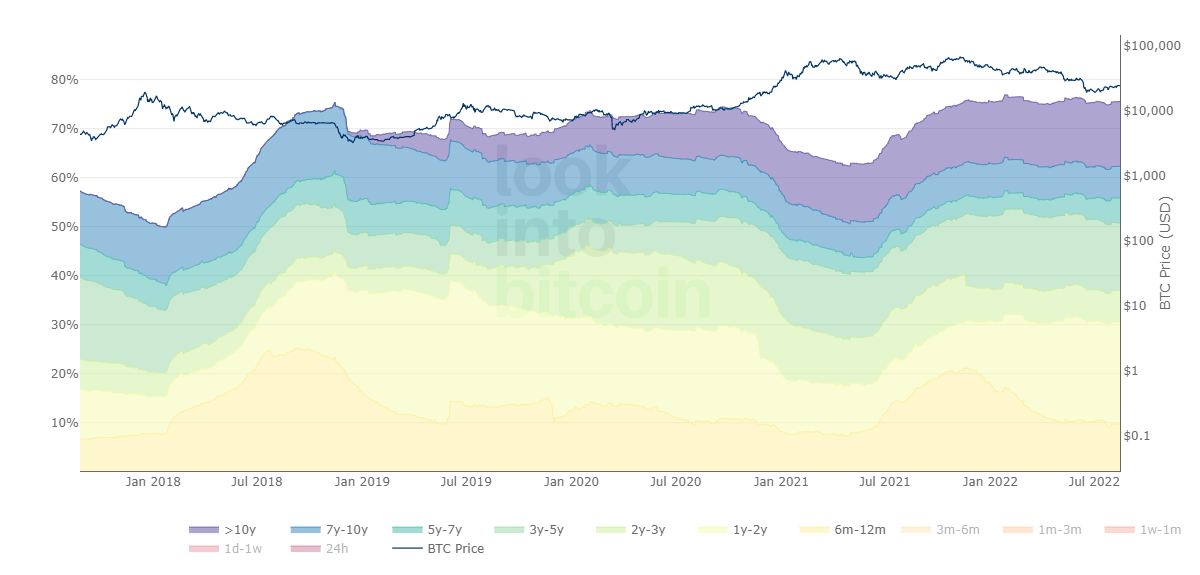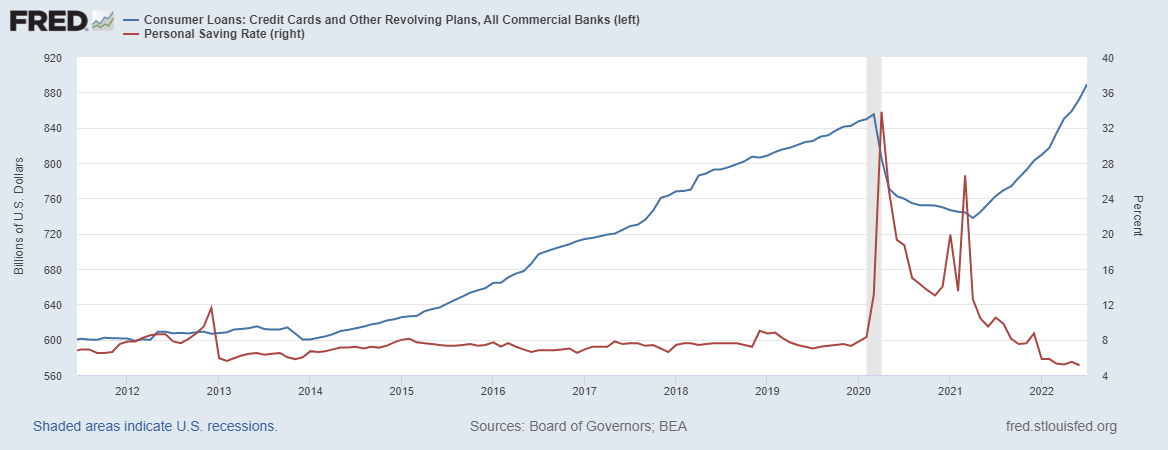Share

INSTITUTIONAL EXPOSURE: BlackRock Partners with Coinbase, and Launches Private Trust to Provide Clients Exposure to Bitcoin
On 4 August, asset manager and investment management firm BlackRock announced that it had partnered with publicly traded cryptocurrency exchange Coinbase to make bitcoin available to its institutional investors. This was closely followed by an announcement on 11 August, where BlackRock announced in a blog post that they intended to launch a new Bitcoin private trust.
BlackRock is the world’s largest asset manager, with assets under management (AUM) being approximately $8.5T as of Q2 2022. In their blog post, Joseph Chalom, the Global Head of Strategic Ecosystem Partnerships at Blackrock stated that BlackRock has a desire to provide their investors an avenue to Bitcoin exposure due to their “institutional clients [being] increasingly interested in gaining exposure to digital asset markets and are focused on how to efficiently manage the operational life cycle of these assets”. With regards to the Coinbase partnership, mutual customers of Coinbase and BlackRock’s investment platform, Aladdin, will gain access to cryptocurrency trading and custody capabilities. This access will be provided through Coinbase Prime, which is a trading platform for institutional cryptocurrency investors). With regards to BlackRock’s launch of a Bitcoin private trust, the trust will be available to US institutional clients, and will aim to track the performance of Bitcoin, net of expenses and liabilities.
This news reflects a major shift in sentiment towards Bitcoin from BlackRock. Several years ago, BlackRock’s Chairman, Larry Fink, was quoted as stating that Bitcoin was an “index of money laundering”). Both the change of BlackRock’s sentiment, and the launch of Bitcoin-related products by the world’s largest asset manager signal how large the cryptocurrency market could potentially get, and reflect how cryptocurrencies are increasingly becoming part of the investment portfolios of institutional investors.
Over the next few weeks, it will be valuable to observe how BlackRock’s new Bitcoin product offerings perform in terms of daily and weekly volume, and whether other institutional players will follow BlackRock’s suit and introduce products to provide Bitcoin exposure to their clients.
POPULAR CRYPTO-MIXER TORNADO CASH SANCTIONED: What Happened, and Potential Implications
On 8 August, it was announced that the U.S. Department of the Treasury’s Office of Foreign Assets Control (OFAC) sanctioned the popular virtual currency mixer Tornado Cash. It was estimated that Tornado Cash was used to launder over USD$7b worth of virtual currency since 2019), despite Chainalysis data showing that over 67% of funds funnelled through Tornado Cash were not necessarily illicit. Due to the sanctions, all property of Tornado Cash that is in the United States or in control of US persons, will be blocked and must be reported to OFAC. The punishment for wilful noncompliance with these sanctions can vary from fines ranging between $50,000 and $100,000, and imprisonment with terms ranging between 10 and 30 years.
Tornado Cash is a crypto-asset mixer. Crypto-asset mixers were designed to hide trails of funds through blending the tokens of one person with a pool of other people’s tokens. Tornado Cash, specifically, utilises smart contracts on the Ethereum network, and allow users to deposit either ether or an ERC-20 token onto one address, and then allow them to withdraw the originally deposited funds from another address. Tornado Cash provides privacy value where regular blockchains do not. Typically, blockchains do not allow for this level of privacy. When someone sends another person a certain amount of cryptocurrency, that transaction is published on the blockchain, allowing for funds between wallets to be tracked.
From a US regulatory perspective, regulators opted to sanction Tornado Cash due to the “significant threat to national security” it posed. It is alleged that Tornado Cash was used by a group of hackers sponsored by North Korea, known as the Lazarus Group, to launder funds stolen from the $600 million hack of the cryptocurrency game Axie Infinity, and the $100 million attack on the US start-up Harmony. Furthermore, Elliptic, a blockchain analytics firm, found that over $1.5 billion in proceeds from illicit activities were laundered through Tornado Cash.
From the perspective of the precedent set by this sanctioning, this is a concerning development. This is because as opposed to sanctioning a country or individual, the US government is opting to sanction open-source code.
Additionally, this is a concerning development with regards to Ethereum. Due to the way Ethereum wallets work, once any amount of Tornado Cash-tainted Ethereum is sent to an Ethereum wallet, the entire wallet is effectively tainted.
This has begun already, as one day following the announcement of sanctions, intervals of 0.1 ETH transactions began originating from the Tornado Cash smart contract into the Ethereum wallets of celebrities such as Jimmy Fallon and Shaquille O’Neal.
Bitcoin does not have this problem, due to its UTXO wallet, which allows for specific Bitcoin to be quarantined. This is applicable in the event Tornado Cash-tainted Bitcoin enters one’s wallet, where the user would then be able to quarantine the tainted Bitcoin, and use the rest of the funds in the wallet as normal.
Over the coming weeks, it will be interesting to see whether any prosecutions are made regarding the newly announced sanctions.
On chain analysis 19 August 2022
While digital asset markets are slowly regaining strength, market dynamics for different investor types have been changing. For instance, the largest asset manager in the world, BlackRock stated, “Despite the steep downturn in the digital asset market, we are still seeing substantial interest from institutional clients”. Additionally, Bitcoin has been the primary subject of interest from non-retail investors. Although there is sustained interest from institutional investors, retail behaviours have changed, which will be demonstrated using on-chain and traditional financial charts.
HODL waves illustrate the proportion of bitcoin in circulation within different age bands. These proportions change over time, which is driven by market conditions. For example, if there is a strong increase in lower age coins held, this might suggest long term bitcoin holders have sold their coins to new market participants. This situation might happen when the price of bitcoin has surged, where the HODL waves visualise the fear of missing out (FOMO) experienced by retail investors.
The chart below shows that the proportion of coins aged between six and twelve months has approximately halved since the start of the year. This symbolises the pressure new market participants have faced from overall market conditions. Within this age band, it would be expected for investors to have seen drawdowns of approximately 40%. Consequently, the proportion of coins aged between 1 and 2 years has increased dramatically. Therefore, it can be concluded that investors who experienced the 2020 bull market have accumulated more bitcoin, taking advantage of reduced prices.

Further, a weakened Bitcoin is not the only pressure on retail investors. The chart below plots the US consumer loan amount alongside the personal savings rate. The current personal savings rate is approximately 5%, which is well below the pre-pandemic levels, while the consumer credit card loans have increased well above pre-pandemic levels. Considering consumer confidence is also below 2008 levels, these metrics show that the modern day consumer is not in a strong financial shape.

These metrics from the Federal Reserve show that US consumers are forced to either use a credit card or dip into savings in order to meet everyday needs. This also supports the decrease in proportion of newly aged bitcoin as investors sell off risky assets in the current economic climate. When the personal savings rate, consumer loans and bitcoin HODL waves are simultaneously analysed, the behaviours of retail investors can be better understood.
The content, presentations and discussion topics covered in this material are intended for licensed financial advisers and institutional clients only and are not intended for use by retail clients. No representation, warranty or undertaking is given or made in relation to the accuracy or completeness of the information presented. Except for any liability which cannot be excluded, Monochrome, its directors, officers, employees and agents disclaim all liability for any error or inaccuracy in this material or any loss or damage suffered by any person as a consequence of relying upon it. Monochrome advises that the views expressed in this material are not necessarily those of Monochrome or of any organisation Monochrome is associated with. Monochrome does not purport to provide legal or other expert advice in this material and if any such advice is required, you should obtain the services of a suitably qualified professional.
Related Articles

Monochrome Partners with Galaxy Digital for Total Bitcoin Wealth Management
Monochrome Capital, a related entity of the investment manager of the Monochrome Bitcoin ETF (IBTC), today announced a strategic partnership with Galaxy Digital to deliver comprehensive Bitcoin wealth management solutions for institutional clients.

IBTC Integrated into Bitcoin-Backed Mortgages for Qualifying High-Net-Worth Investors
The Monochrome Bitcoin ETF (IBTC) has been incorporated into a Top 4 Australian bank’s residential mortgage lending framework. IBTC is now recognised alongside traditional assets such as unencumbered property and income streams when assessing high-net-worth (HNW) investors for home loans. This development connects regulated Bitcoin ETFs with private banking services, enabling Bitcoin holders to access property financing without liquidating their exposure.